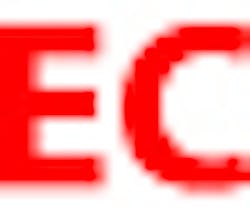“If you want to get along, go along,” famously said Sam Rayburn, Texas congressman and longtime speaker of the US House of Representatives.
A maxim from the highest legislative circles rings true in office politics, and particularly so in the Los Angeles County District Attorney’s Office where Richard Ceballos has been employed since 1989.
In 2000, Ceballos, a deputy district attorney, was serving in one of the D.A.’s branch offices where his duties included supervising other lawyers and, where things seemed to need a look-see, investigating aspects of cases being prosecuted.
A defense lawyer in a pending theft case told Ceballos that he believed a deputy sheriff had lied in an affidavit used to obtain a search warrant. After Ceballos examined the affidavit and visited the scene it described, he concluded the affidavit contained serious misrepresentations. He told his supervisors about his concerns, and followed up by sending a memo to them recommending that the case be dismissed.
After a heated meeting involving Ceballos, his superiors, and representatives of the sheriff’s department who, not surprisingly, were sharply critical of Ceballos’s handling of the case, the D.A. decided to proceed with the prosecution. At a pre-trial hearing, the defense called Ceballos to testify about the affidavit, but the judge rejected the challenge to the warrant. Ceballos later spoke about the matter at a local bar association meeting.
Following these events, Ceballos claims he was subjected to several retaliatory employment actions, including a reassignment and transfer and the denial of a promotion.
He filed an employment grievance, which was denied on the grounds he had suffered no retaliation.
Undaunted, Ceballos filed suit in federal district court alleging that the District Attorney had violated his rights under the First and Fourteenth Amendments by retaliating against him based on his memo. The district judge dismissed the suit, but the US Court of Appeals for the Ninth Circuit held that the allegations in Ceballos’s memorandum were constitutionally protected speech. The appeals court did not deal with his testimony for the defense or his remarks to the bar group.
In 2004, the US Supreme Court accepted the case for review and last May, by a 5-4 margin, ruled that the Constitution does not prevent a government employer from retaliating against an employee based on job-related speech.
“We hold that when public employees make statements pursuant to their official duties,” said Justice Anthony Kennedy’s majority opinion, “the employees are not speaking as citizens for First Amendment purposes, and the Constitution does not insulate their communications from employer discipline.”
The ruling leaves intact the high court’s earlier public employee speech decisions, which establish the circumstances in which a worker enjoys protected speech. Under the doctrine established in Pickering v. Board of Education (1968) and Connick v. Myers (1983), a court first determines if the employee spoke as a citizen on a matter of public concern. If not, then the employee has no First Amendment claim based on the employer’s reaction to the speech. But, if what the employee says contributes to public discussion, then the court balances the employee’s rights against the employer’s interests in managerial efficiency and workplace harmony. “The restrictions it imposes must be directed at speech that has some potential to affect the entity’s operations,” the majority said.
The dissenters warned that the distinction would be unworkable and counterproductive. “The notion that there is a categorical difference between speaking as a citizen and speaking in the course of one’s employment is quite wrong,” wrote Justice John Paul Stevens. “Moreover, it seems perverse to fashion a new rule that provides employees with an incentive to voice their concerns publicly before talking frankly to their superiors.”
The decision tries to sidestep the balancing test by creating a bright-line rule, which categorically excludes from “public concern” the content of job-related speech by public employees. As a result, government workers are eligible for First Amendment protection only where what they say relates to matters outside their official duties. In effect, the less likely public employees know what they are talking about, the greater their freedom to speak.
The Supreme Court has created a dilemma for public employees. On the one hand, the Kennedy majority encourages government agencies to create internal grievance procedures. However, employees who use in-house processes to make complaints would be engaging in an activity within their job description, and, under Ceballos, what they say would have no constitutional protection. On the other hand, openly expressing opinions, for example, via letters to the editor and public comments, can threaten their jobs as well. They risk ostracism in the office and discipline for not following internal procedures.
What’s likely to result is an increase in the number of leaks and other anonymous tips by inside sources to news organizations about wasteful, inept, and illegal government policies and practices. That spells problems for both employer and employee.
